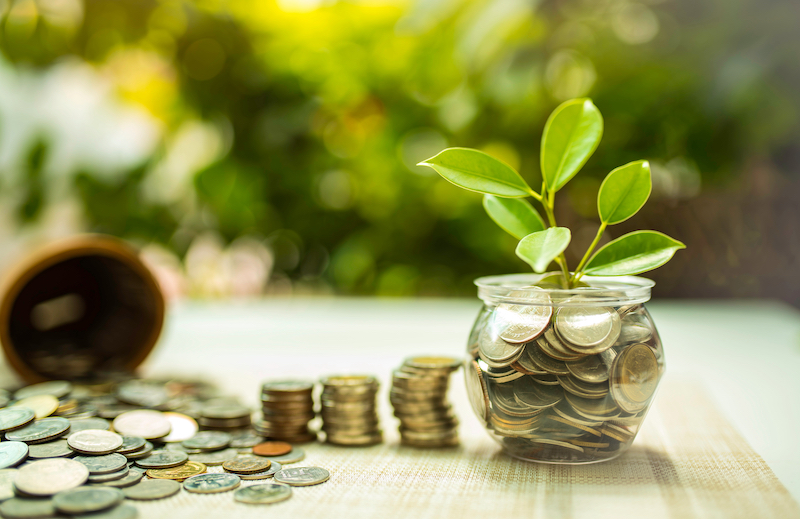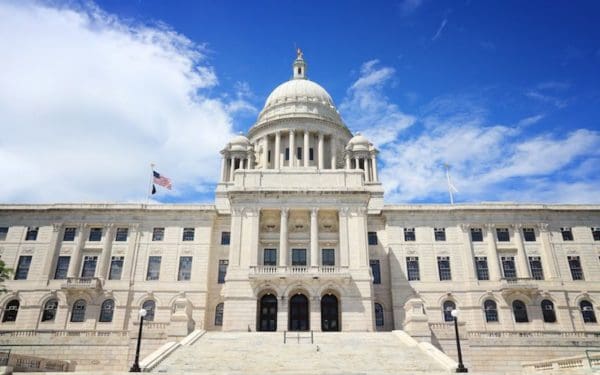
Green banks are catching on around the world, and could be a key way to leverage capital in New England. Photo: Shutterstock
Imagine you’re a homeowner who wants to swap an old oil-burning furnace for an efficient and climate-friendly electric heat pump. You’re excited to do it, except for one thing: You can’t afford it.
Or suppose you’re a solar entrepreneur trying to convince a customer to save money and install solar panels on a multi-family apartment building. But your customer lacks the equity to get started.
Or maybe you’re a city or state government, and you want to encourage homeowners and entrepreneurs to make the leap into the green energy economy. Where can you find the funds to incentivize green projects?
The answer could be green banks. Although relatively new on the finance scene, green banks are getting more and more buzz and could be the path to helping New England meet its climate goals faster. Here’s a quick primer on how they work.
What are Green Banks?
Like the name suggests, green banks are mission-driven financial institutions that take money in and loan money out. They are designed to help everyone – from homeowners, nonprofits, businesses, and even city and state agencies – pay for green energy upgrades. These might include projects like new heating and cooling systems or installing solar panels.
Green banks offer low-interest flexible loans and help ensure borrowers keep their costs low by taking advantage of federal and state incentives for clean energy projects. Unlike conventional banks, most green banks are public or quasi-public and usually established with federal and state money. These public dollars attract private capital investment with the ultimate objective of making clean energy more affordable and accessible for all.
According to the Green Bank Network, the U.S. has 14 green banks that have helped facilitate $3.67 billion in clean energy investment. Green banks can be established at the city, state, and even national levels.
The country’s first green bank was founded right here in New England: the Connecticut Green Bank, established by the Connecticut General Assembly in 2011. As expressed by the bank’s website, the idea was to “achieve cleaner, less expensive, and more reliable sources of energy while creating jobs and supporting local economic development.” In 2021, the bank expanded its mission to include broader environmental concerns, like parks and recreation, agriculture, climate resiliency and adaptation, land conservation, water, waste and recycling, and carbon offsets. Today, on average, it raises seven dollars of private capital for every public dollar invested.
Other green banks exist in Washington, D.C., California, Colorado, and Nevada. The Inflation Reduction Act created a $27 billion green bank fund to support grants to national and local green banks, which should give green banks everywhere a big boost. Much of that money is earmarked for renewable energy projects that benefit low-income and disadvantaged communities.
How Do Green Banks Work?
Green banks borrow money from private investors by issuing green bonds. They then use that money to make loans. A green bond is a fixed-income security that works the way all bonds do, that is, as an IOU between the bank and the investors who buy the bonds. Only in this case, green bonds fund projects with an environmental benefit.
The brilliance of the green bank model is that it presents an elegant market solution. They leverage private sector capital to fund clean energy projects rather than relying solely on traditional government subsidies, which typically are given out with no plan to recoup costs. Expanding green banks nationwide can create a long-term sustainable source of public financing that gets continually repaid. That money can then be plowed back into more clean energy investments.
Here’s an example: Acme Green Bank offers low-interest loans with a long payback period to support energy efficiency retrofits. When Jane Q. Entrepreneur decides to upgrade her office building with new insulation, energy-efficient heating and cooling systems, and solar panels, she gets a low-interest loan from Acme Bank to pay for it. She begins paying the loan back a few months after completing the work. The retrofits Jane Q. has made save her business money. Because she’s spending less on utility bills, it’s easy to pay back the loan and, after repayment, invest her ongoing savings to grow her business.
With the money paid back, Acme Green Bank can turn around and make loans to others – including individuals, businesses, and cities and towns – eager to invest in their own clean energy and climate-related projects. Meanwhile, investors who bought Acme’s green bonds receive a return on their investment, too.
What’s the Future for Green Banks?
When it comes to a carbon-free future, we need all the tools in our tool kit. We know it’s not enough to advocate for a clean energy future. We must figure out ways to pay for it, too. Green banks could play a critical role alongside government subsidies for clean energy projects.
Every state in New England could have a robust green bank poised to unlock the power of private capital to do good. Right now, fully functional green banks can be found in Connecticut and Rhode Island. A Vermont effort is underway to establish a green bank in that state, and the Maine Legislature approved a bill in 2021 creating the Maine Clean Energy and Sustainability Accelerator. As of yet, New Hampshire and Massachusetts have no green banks.
There are now billions of dollars in federal funds available to create and bolster green banks. If we harness those dollars and make them work for all communities, we’ll make a truly smart investment.



